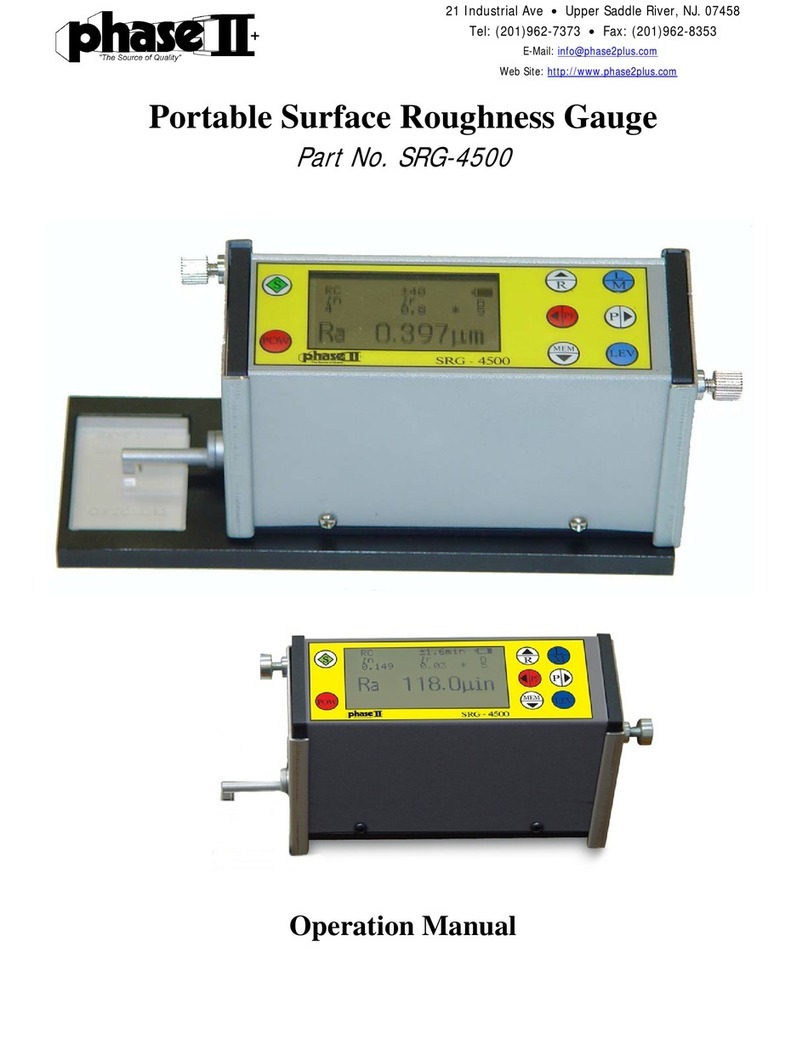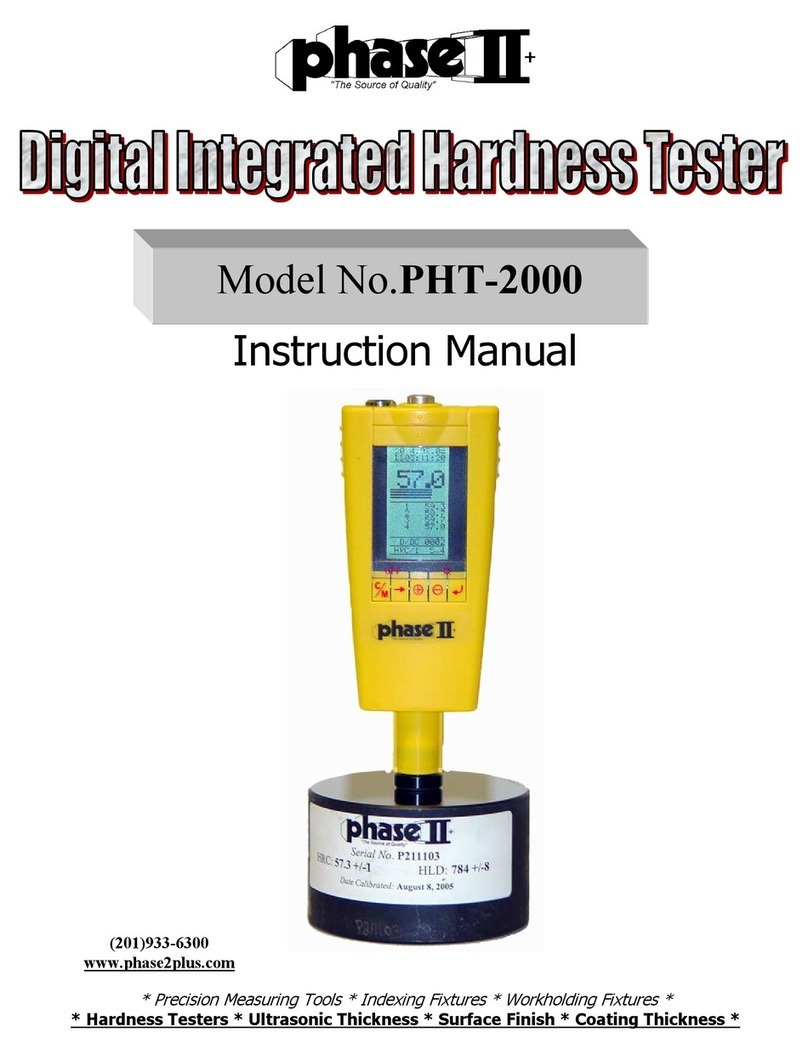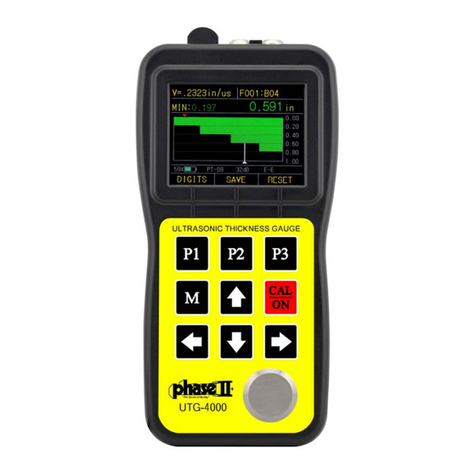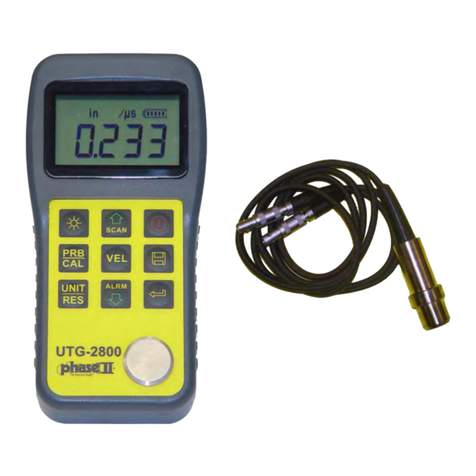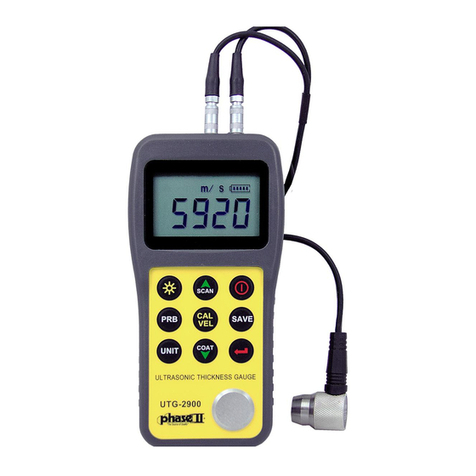
8
Fig.6 Pipe sample Fig.7 Bottom view of probe
6.Maintenance
Be sure to clean the probe and cable after each use. Grease, oil and dust will cause the cable of the
probe to dry out and shorten life expectancy.
If the unit is not to be used for a long period of time, remove the batteries to avoid battery leakage
and corrosion of the battery contacts.
Avoid storing the unit in a damp or extremely hot environment.
● DO NOT OPEN INSTRUMENT! This will automatically void your warranty.
7) Special Applications & Couplant Gel notes:
Measuring hot surfaces
The velocity of sound through a substance is dependant upon its temperature. As materials heat up, the velocity
of sound through them decreases. In most applications with surface temperatures less than about 100°, no special
procedures must be observed. At temperatures above this point, the change in sound velocity of the material being
measured starts to have a noticeable effect upon ultrasonic measurement. At such elevated temperatures, it is
recommended that the user perform a calibration procedure on a sample piece of known thickness, which is at or
near the temperature of the material to be measured. This will allow the gauge to correctly calculate the velocity
of sound through the hot material.
When performing measurements on hot surfaces, it may also be necessary to use a specially constructed
high-temperature transducer. These transducers are built using materials which can withstand high temperatures.
Even so, it is recommended that the probe be left in contact with the surface for as short a time as needed to
acquire a stable measurement. While the transducer is in contact with a hot surface, it will begin to heat up, and
through thermal expansion and other effects, may begin to adversely affect the accuracy of measurements.
Measuring laminated materials.
Laminated materials are unique in that their density (and therefore sound-velocity) may vary considerably
from one piece to another. Some laminated materials may even exhibit noticeable changes in sound-velocity
across a single surface. The only way to reliably measure such materials is by performing a calibration procedure
on a sample piece of known thickness. Ideally, this sample material should be a part of the same piece being
measured, or at least from the same lamination batch. By calibrating to each test piece individually, the effects of
variation of sound-velocity will be minimized.
An additional important consideration when measuring laminates, is that any included air gaps or pockets will
cause an early reflection of the ultrasound beam. This effect will be noticed as a sudden decrease in thickness in
an otherwise regular surface. While this may impede accurate measurement of total material thickness, it does
provide the user with positive indication of air gaps in the laminate.












